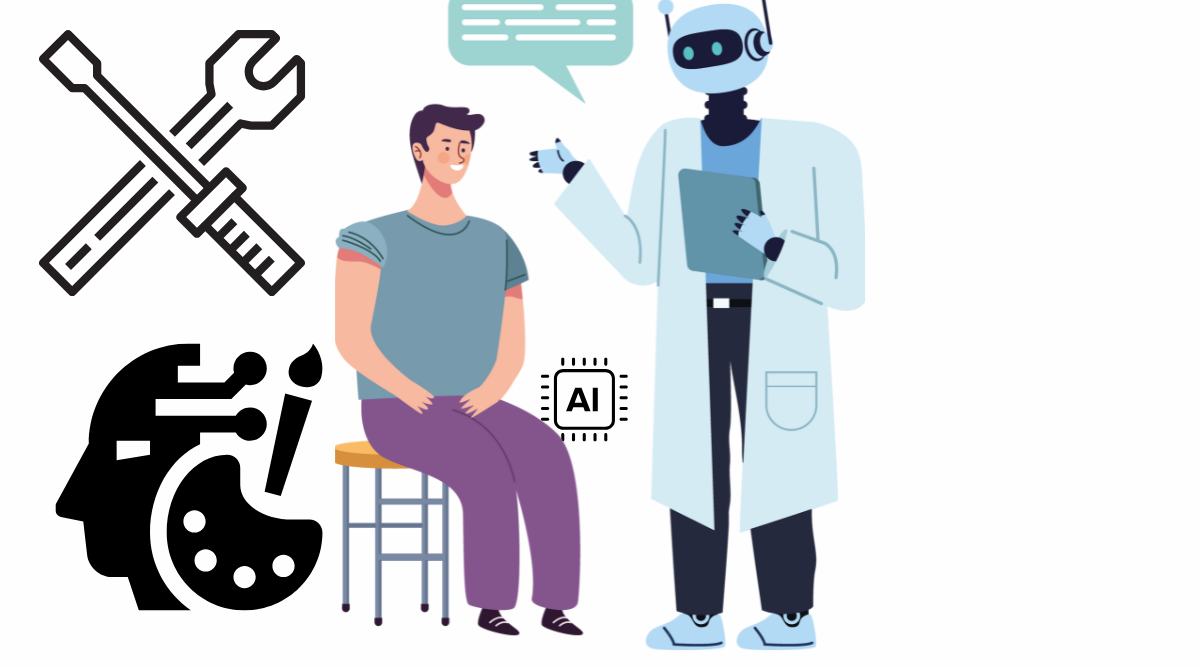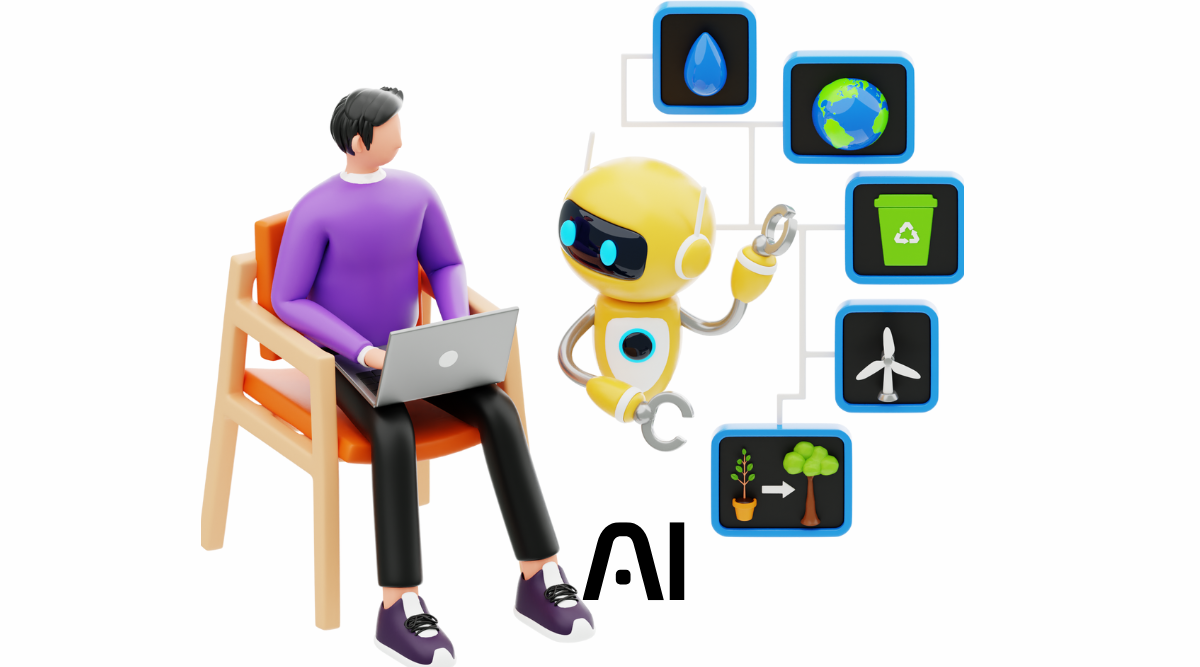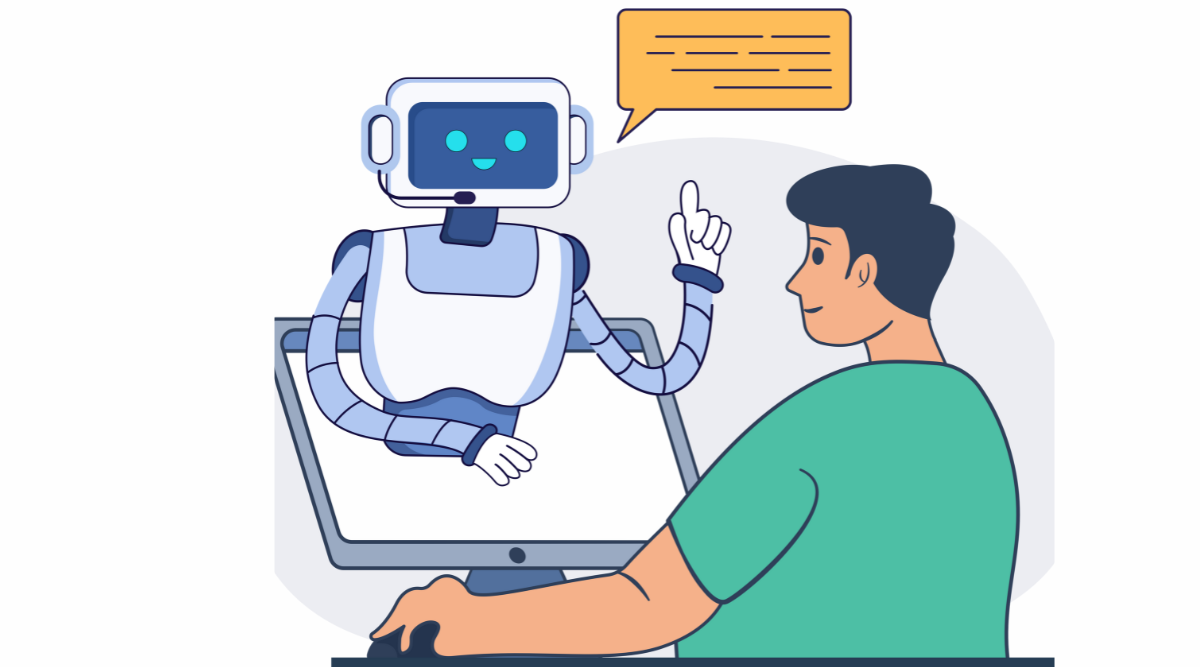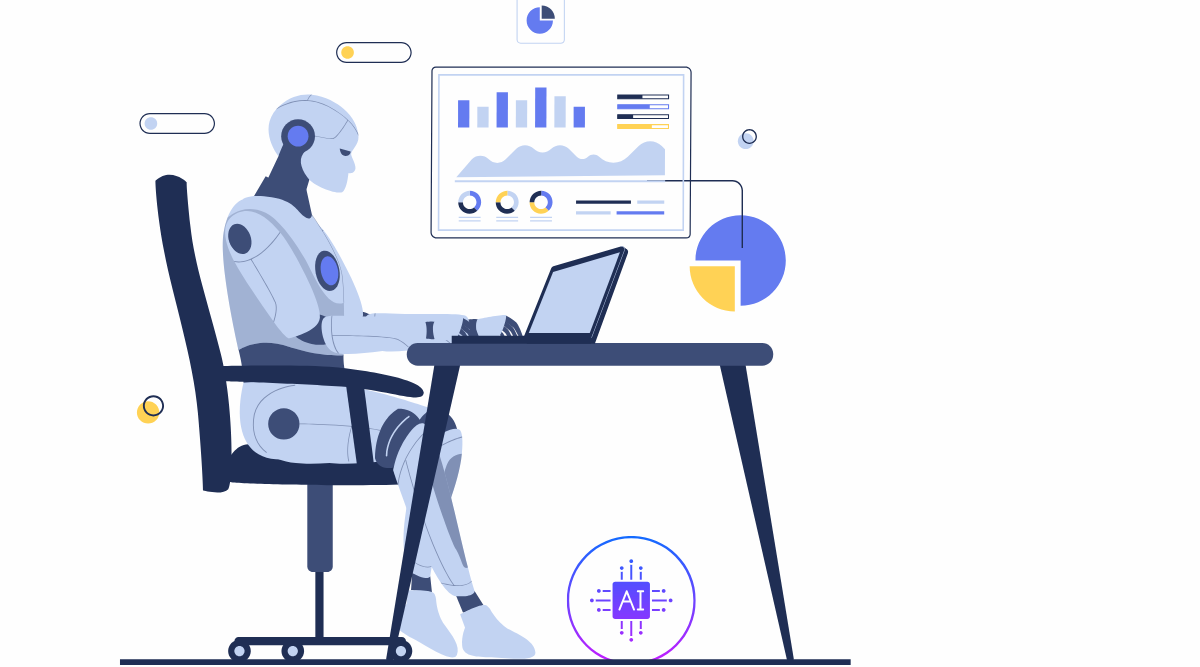Automated Outreach Strategies for 2025: Tools, Timing, and Templates
Discover strategies, tools, and templates for optimized automated outreach in 2025. Stay ahead with insights on timing and personalization.

In the constantly evolving digital landscape, businesses are increasingly turning to automated outreach strategies to maintain a competitive edge. By 2025, the sophistication and effectiveness of these strategies are expected to reach new heights. Companies like Floworks.ai are leading the charge in providing smart solutions for businesses looking to optimize their outreach efforts. As experts in AI-driven automation, Floworks.ai champions a more personalized and efficient approach to communication, ensuring that messages not only reach their intended audience but also resonate deeply.
In this blog, we'll explore the newest trends, tools, and methodologies for automated outreach set to dominate 2025. From understanding the mechanics of automation to leveraging cutting-edge tools for higher impact, businesses can transition from traditional outreach to a more data-driven approach.

Understanding Automated Outreach in 2025
The Evolution of Automated Outreach
Automated outreach has come a long way from its humble beginnings as a simple autoresponder system. Over the years, technological advancements have allowed for the incorporation of AI, enabling marketing and sales teams to engage prospects more meaningfully. By 2025, outreach strategies are expected to be more intuitive, with AI understanding customer behaviors and preferences like never before.
- AI and Machine Learning: These technologies are now core to analyzing vast amounts of data, predicting user behavior, and tailoring messages accordingly.
- Omni-channel Communication: Automated systems now facilitate seamless interactions across various platforms like email, social media, and chat, ensuring a consistent message.
- Predictive Analytics: Anticipating customer needs through data insights aids in sending timely and relevant communications.
The progression has been remarkable, indicating that businesses not adopting these technologies might find themselves lagging behind.
Current Trends Shaping Automated Outreach
To stay ahead, it's crucial to understand and adopt emerging trends in automated outreach:
- Hyper-Personalization: Generic messages are becoming obsolete. In 2025, personalization driven by AI insights will be the key to engaging stakeholders effectively.
- Integration with CRMs: Automated outreach tools will be deeply integrated with Customer Relationship Management systems, ensuring a holistic view of the customer journey.
- Natural Language Processing (NLP): As NLP becomes more sophisticated, it will enhance the conversational quality of automated messages, making interactions feel natural.
- Visual Content Utilization: Incorporating personalized visual content in outreach communications is rising, aiding in capturing the audience’s attention quickly.
Companies adhering to these trends will likely see a substantial improvement in their communication effectiveness.
Why Automated Outreach Matters More Than Ever
In an age where consumer attention spans are dwindling, maintaining relevance and engagement is paramount. Automated outreach solutions offer numerous benefits that amplify their importance:
- Enhanced Reach: Businesses can reach a more extensive array of prospects efficiently, ensuring no potential lead is overlooked.
- Consistency: Automated systems ensure that messages remain consistent and on-brand, irrespective of the volume.
- Efficiency: Manual outreach is significantly time-consuming. Automation streamlines processes, freeing up time for creative strategy and personalized engagement.
For a company like Floworks.ai, specializing in AI-driven solutions, these points underscore the importance of adopting automated outreach to transform how businesses communicate in 2025.
Top Outreach Tools for 2025
Innovative Tools Driving Automation
By 2025, the market will offer an array of innovative tools that simplify outreach efforts through AI:
- Floworks.ai Platform: Known for its seamless integration of AI technologies, Floworks.ai is at the forefront in providing solutions that tailor messages based on user data.
- Mailshake: A user-friendly tool that enables multichannel outreach, assisting in the crafting and scheduling of emails to align with client behaviors.
- Reply.io: Utilizes AI to optimize campaign strategies, allowing for effective follow-ups based on recipient engagement patterns.
These tools, among others, are setting new standards in the market, with AI at their core to tailor communications and increase engagement.
Comparison of Leading Outreach Tools
A comparative analysis of outreach tools helps to uncover which solutions might best fit business needs. Consider the following table showcasing key features:
| Tool | AI Integration | Multi-Channel Support | Customization | Analytics |
|---|---|---|---|---|
| Floworks.ai | Advanced | Yes | High | Yes |
| Mailshake | Moderate | Yes | Medium | Yes |
| Reply.io | High | Yes | High | Yes |
Each tool offers unique advantages, allowing businesses to select what aligns best with their outreach goals.
Integrating AI in Outreach Tools for Better Results
The integration of AI in outreach tools is not merely a trend but a necessity for optimizing outcomes:
- Personalized Content: AI analyzes behavioral data to craft messages that resonate with individual recipients.
- Automation of Follow-Ups: AI tools can schedule follow-ups when recipient engagement is detected, increasing conversion chances.
- Dynamic Scheduling: AI proposes the best times to send communications, aligning with recipients’ online activity patterns.
By embracing AI, tools like those offered by Floworks.ai provide businesses a competitive advantage through enhanced outreach capabilities.
Effective Timing for Automated Outreach
Identifying Optimal Outreach Times
Timing is critical in automated outreach. Messages sent at the right moment have significantly higher open and response rates:
- User Behavior Analysis: Understanding when a target audience is most active guides optimal sending times.
- Time Zone Considerations: Scheduling based on recipient time zones ensures messages land during peak engagement periods.
The Role of Analytics in Timing
Analytics play a pivotal role in refining sending schedules:
- Engagement Metrics: Tracking when recipients open and respond to communications informs future timing strategies.
- A/B Testing: Comparing different sending times provides data-driven insights into the most effective outreach schedules.
Utilizing analytics, businesses can fine-tune their strategies to maximize engagement.
Case Studies: Timing Strategies That Work
Success stories abound illustrating the impact of timing:
- Business A reported a 30% increase in response rates by adjusting send times to align with recipient activity.
- Company B implemented AI-driven analytics to refine their outreach timing, resulting in a 40% uptick in engagement.
These examples emphasize the power of timing in enhancing outreach effectiveness, underscoring its importance for modern strategies.
Stay tuned for further insights into crafting compelling templates and mastering automated outreach moving forward.
Crafting the Perfect Email Outreach Templates
Creating effective email templates is an essential component of a successful automated outreach strategy. As digital communication evolves, template creation is expected to become more nuanced and targeted.
Core Elements of Successful Templates
Successful email templates incorporate several key elements that ensure they are both engaging and effective:
- Personalized Greetings: Starting with a personalized greeting sets a friendly tone and shows recipients that they're not just another entry in a database.
- Compelling Subject Lines: The subject line is the first impression. Make it attention-grabbing yet relevant to encourage more opens.
- Clear Call to Action (CTA): Every email should have a clear purpose. Whether it’s to schedule a demo, download a resource, or make a purchase, the CTA should be prominent and persuasive.
- Concise and Relevant Content: Brevity is crucial. Ensure that every sentence adds value and keeps the recipient's goals and pain points in mind.
- Professional Design: A clean, professional design that is mobile-friendly ensures better readability and engagement.
Adapting Templates for Different Audiences
Different audiences have different needs, and your templates should reflect this diversity:
- Segmented Audience Profiles: Use insights from customer data to create audience segments based on demographics, buying behavior, or engagement levels.
- Language and Tone: Adapt the language and tone to match the audience's preferences and the industry standards. A B2B communication might be more formal, whereas a B2C could afford a more relaxed tone.
- Industry-Specific Examples: Incorporate industry-specific examples or case studies to make the communication more relatable and insightful for the recipient.
Examples of High-Converting Email Templates
Examining examples of high-converting templates can provide guidance for creating your own:
- Welcome Series: These are emails sent to new subscribers that set the tone for future communications. They often include a welcome message, introduction to services, and a CTA to start exploring.
- Abandoned Cart Reminders: For e-commerce, these prompts remind customers to complete their purchase, often with a special offer to incentivize action.
- Feedback Requests: Post-interaction emails that seek user feedback can strengthen relationships and provide valuable insights.

The Future of Automated Outreach
Predicted Trends and Their Implications
The landscape of automated outreach is continually changing, and understanding upcoming trends is crucial for staying relevant:
- Voice Search and AI Assistants: As voice recognition technology improves, integrating with virtual assistants can open new channels for engagement.
- Increased Privacy Regulations: As data privacy becomes a major concern, businesses need to adapt to stricter regulations like GDPR, affecting how data is collected and used in automated outreach.
- Sustainability in Outreach: Highlighting sustainability efforts can resonate well with environmentally conscious consumers.
The Growing Importance of Personalization
Personalization will continue to be at the forefront of outreach strategies:
- Dynamic Content: Use variable data fields to automatically insert personalized content in emails based on recipient profiles.
- Predictive Personalization: Using AI to predict future behavior and preferences to tailor communications further.
- Emotional Connection: Tapping into emotional responses by crafting messages that resonate on a personal level can significantly increase engagement rates.
Challenges and Opportunities Ahead
With innovation come challenges, but also opportunities for growth:
- Data Security Concerns: Ensuring data security will be paramount, requiring robust system security measures.
- Avoiding Automation Fatigue: Striking a balance between automation and personal interaction to prevent desensitization among recipients.
- Adopting Multi-Channel Strategies: While email is powerful, combining it with other channels like SMS and social media can improve outreach results.
Best Practices for Automated Outreach
Balancing Automation with Human Touch
Automation should not equate to impersonality:
- Human Intervention Points: Introduce touchpoints where human interaction can complement automated communication.
- Tailored Follow-Ups: Customize follow-up messages based on recipient interactions to show attentiveness.
Ensuring Compliance with Regulations
Compliance with legal requirements is crucial to avoid penalties:
- Updated Privacy Policies: Regularly update policies to reflect compliance with current data protection laws.
- Opt-In and Opt-Out Features: Clearly offer opt-in options and make opting out simple and straightforward for users.
Tips for Consistently Effective Outreach
To ensure your outreach remains effective:
- Regular A/B Testing: Experiment with different approaches to identify what resonates best with your audience.
- Continuous Learning: Stay informed about the latest tools and techniques in automated outreach for ongoing improvements.

Personalization in Automated Outreach
Techniques for Personalizing Outreach
Personalization can significantly enhance recipient engagement and loyalty:
- Collected Data Utilization: Use data intelligently to craft messages that speak directly to the recipient's needs and past behavior.
- Contextual Messaging: Leverage context from past interactions to make communications more relevant.
Benefits of Personalization in Engagement
The benefits of personalization extend beyond just increased engagement:
- Strengthened Customer Loyalty: Personalized outreach fosters loyalty as customers feel valued.
- Improved Conversion Rates: Tailored messages tend to convert at a higher rate due to their relevance.
Tools to Assist in Personalization Efforts
Numerous tools can assist in crafting personalized communications:
- Customer Data Platforms (CDPs): These platforms centralize customer data for easier analysis and segmentation.
- Personalization Engines: Use AI-driven engines to automate the personalization process, crafting individualized content at scale.
By implementing these strategies, companies like Floworks.ai can ensure their automated outreach not only meets the needs of 2025 but surpasses expectations, providing meaningful interaction and engagement.
Conclusion
As the digital landscape continues to evolve, automated outreach stands out as a crucial asset for businesses aiming to enhance their communication strategies by 2025. The tools, timing, and templates discussed throughout this blog illustrate the potential for businesses to significantly increase efficiency and effectiveness in engaging with their audiences. Companies like Floworks.ai exemplify the ability to marry cutting-edge AI technologies with a personalized approach, allowing businesses to deeply resonate with prospects and clients alike.
In embracing the innovations and methodologies detailed herein, organizations can look forward to stronger relationships with their audiences, more profound insights into customer behavior, and the ability to adapt swiftly to the ever-changing demands of the market. As you consider implementing these strategies, remember that successful outreach is not merely about adopting technology—it's about enhancing the human connection through thoughtful, data-informed communication.
In conclusion, the journey toward mastering automated outreach is a continuous one. By staying informed, adaptive, and attentive to the principles highlighted, businesses can navigate the future with confidence, ensuring that their outreach efforts not only reach but truly resonate. Here's to a future where meaningful connections and tech-driven efficiencies go hand in hand.
FAQs on Automated Outreach Strategies
How can small teams leverage automated outreach effectively?
Small teams can maximize the potential of automated outreach by utilizing user-friendly and cost-effective tools that don't require extensive technical know-how. Platforms like Floworks.ai help streamline workflows by automating repetitive tasks, allowing teams to focus on crafting personalized messages and strategies. Small teams should prioritize tools that integrate well with existing systems and offer robust support and analytics features to track and improve their outreach campaigns.
What are some common pitfalls to avoid in automated outreach?
One common pitfall in automated outreach is over-reliance on automation without sufficient personal touch, leading to generic and impersonal communications. Another risk is neglecting analytics and failing to adjust strategies based on data insights. Additionally, teams should be wary of compliance issues, such as privacy regulations, which require careful handling of customer data. Finally, it's crucial to avoid message saturation—sending too many messages too frequently can lead to audience fatigue and disengagement.
Is AI a necessity for future outreach strategies?
While it's possible to conduct outreach without AI, using AI significantly enhances the effectiveness and efficiency of outreach efforts. AI helps in personalizing communications, predicting optimal timing for engagement, and analyzing vast amounts of data to refine strategies. As outreach landscapes become increasingly complex and data-driven, AI becomes more essential for businesses looking to maintain a competitive edge in engaging and retaining customers.
How can businesses ensure their outreach strategy complies with regulations?
Compliance with regulations is critical in automated outreach. Businesses should stay informed about relevant data protection laws, such as GDPR in Europe or CCPA in California, to ensure that all outreach efforts respect customer privacy and data use guidelines. Implementing transparent data-use policies, securing customer consent, and providing easy opt-out mechanisms are essential practices to adhere to legal standards and build trust with customers.
What role does personalization play in automated outreach?
Personalization is at the core of successful automated outreach. It involves tailoring messages to resonate with individual recipients based on data insights such as past interactions, preferences, and behaviors. Personalization fosters stronger connections, enhances engagement, and boosts conversion rates by demonstrating that businesses understand and value their clients. Tools that offer robust personalization capabilities, like those from Floworks.ai, are invaluable assets for crafting meaningful, impactful communication strategies.


